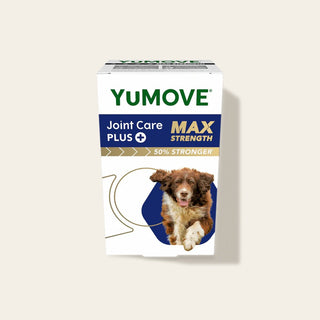

How to adapt your home for your senior dog
Sometimes, it’s hard to believe your dog is no longer a puppy. They’re still as keen as ever to go out for a walk. They still get excited at the sound of the doorbell. They still love their squeaking duck toy beyond all reason.
Occasionally, though, you may realise that – while they’re still a pup at heart – their joints need a bit of extra support.
Is your dog older than you think?
We tend to think that a dog becomes a senior at the age of seven. However, research by Ideker and colleagues (conducted on Labrador retrievers) found that a key epigenetic marker of ageing showed a ‘non-linear’ relationship between dog and human ageing. This suggests that there isn’t a clear correlation between a year in our lives and a year in our dogs’ lives.
Instead, Science Magazine has helpfully provided this dog age calculator based on the research mentioned above, which suggests that a dog is likely to enter their senior years at around the age of six.
Of course, take this with a pinch of salt – not least of all because different breeds of dogs have different average lifespans.
Signs of joint stiffness
As your dog graduates into the senior class, they may naturally demand more ‘top dog’ status perks, such as claiming the warmest spot in the kitchen for themselves.
You might also notice that your dog starts to show signs of joint stiffness. For example:
- Your dog is sleeping more – while your dog might just fancy a nap, they could also have taken to their dog bed because their joints are feeling stiff.
- Walks are taking longer – if your dog is lagging behind a bit on walks, it could be because they’re finding it harder to walk quickly.
- Your dog finds it difficult to get up after resting – stiff, ageing joints might make it harder for your dog to stand up when they’ve been lying down.
- Your dog is reluctant to walk, jump or play – if your dog’s joints are feeling stiff, your dog might find it harder to chase after a ball or jump up for a treat.
How you can help your dog’s stiff joints
As animal lovers, we want to do the best for our dogs and support their joints. So you may already be adjusting their daily exercise on the recommendation of your vet, and giving them a high-quality joint supplement for older dogs.
You can learn more about dog joint supplements from YuMOVE.
But did you know that there’s also plenty that you can do in your home to make life easier for your senior pup? Here’s our round-up of tips that can make a big difference for your dog.
Save your dog from slippery flooring

Wooden floors, lino and tiles can be very slippery under a dog’s paws, especially when they’re excited about walkies and are dashing for the door. As they get older, your dog may have to work extra hard to stop themselves from slipping, as their muscles may have become weaker with age.
This slipping and sliding can be hard on your dog’s body, and may further exacerbate joint stiffness.
Use non-slip mats and trim those nails
One simple solution is to secure mats to the floor with non-slip tape so that your dog can walk without the risk of slipping and sliding. Another option is to put non-slip rubber mats in areas where your dog tends to spend a lot of their time.
It also makes sense to ensure that your dog’s nails are well-clipped and that the hair around and between their toes is trimmed. This will help give them more traction as they walk across the floor.
No stairway to heaven (upstairs)

Your dog knows as well as you do that all the best dog beds are upstairs. You might insist that they’re for humans, not for sleepy canines, but they’ll never be convinced.
However, climbing up and down stairs can be tough on stiff joints. So, it’s a good idea to install baby gates at the bottom of your stairs to reduce the likelihood of your dog sneaking upstairs for a nap. This will also save you on laundry.
Ramping things up

Moving up and down steps outdoors can also put more pressure on your pup’s joints. You can help them by installing a dog-friendly ramp to give them an alternative route.
Also, while we’re on the subject of making life easier for your senior dog, you could look into using a ramp to make it easier for them to get in and out of the car, too. Certain cars, like The Land Rover Discovery Sport, even have a portable shower to help you wash off your dog after they’ve trailed through a series of muddy puddles!
Get a deluxe dog bed
Help your pup to sleep sweetly at night – and during the day – with a dog bed that’s designed for older, stiffer joints.

The ideal dog bed for senior canine citizens will:
- Be large enough for them to spread out.
- If raised, will have a chamfered (sloping) edge, making it easier to get in and out of.
- Be secure with no risk of slipping – try putting a mat underneath to help with this.
Cold and damp draughts can make things worse for stiff joints, so make sure that you put your dog’s bed in a warm place away from draughty doors and windows.
Take dinner to a new level
Another great way to take the pressure off your dog’s stiff joints is to use a raised-height dog bowl. There are all kinds of inventive designs available, including this fancy copper double bowl style and handmade personalised oak dog feeders
Could your dog benefit from YuMOVE Joint Care PLUS Max Strength?
YuMOVE Joint Care PLUS Max Strength is our strongest PLUS formula yet, specifically formulated for dogs with stiffer joints who may need extra support. If you suspect your dog could use some extra support – or if they’re already on YuMOVE and you want to take the next step – why not give it a try?




